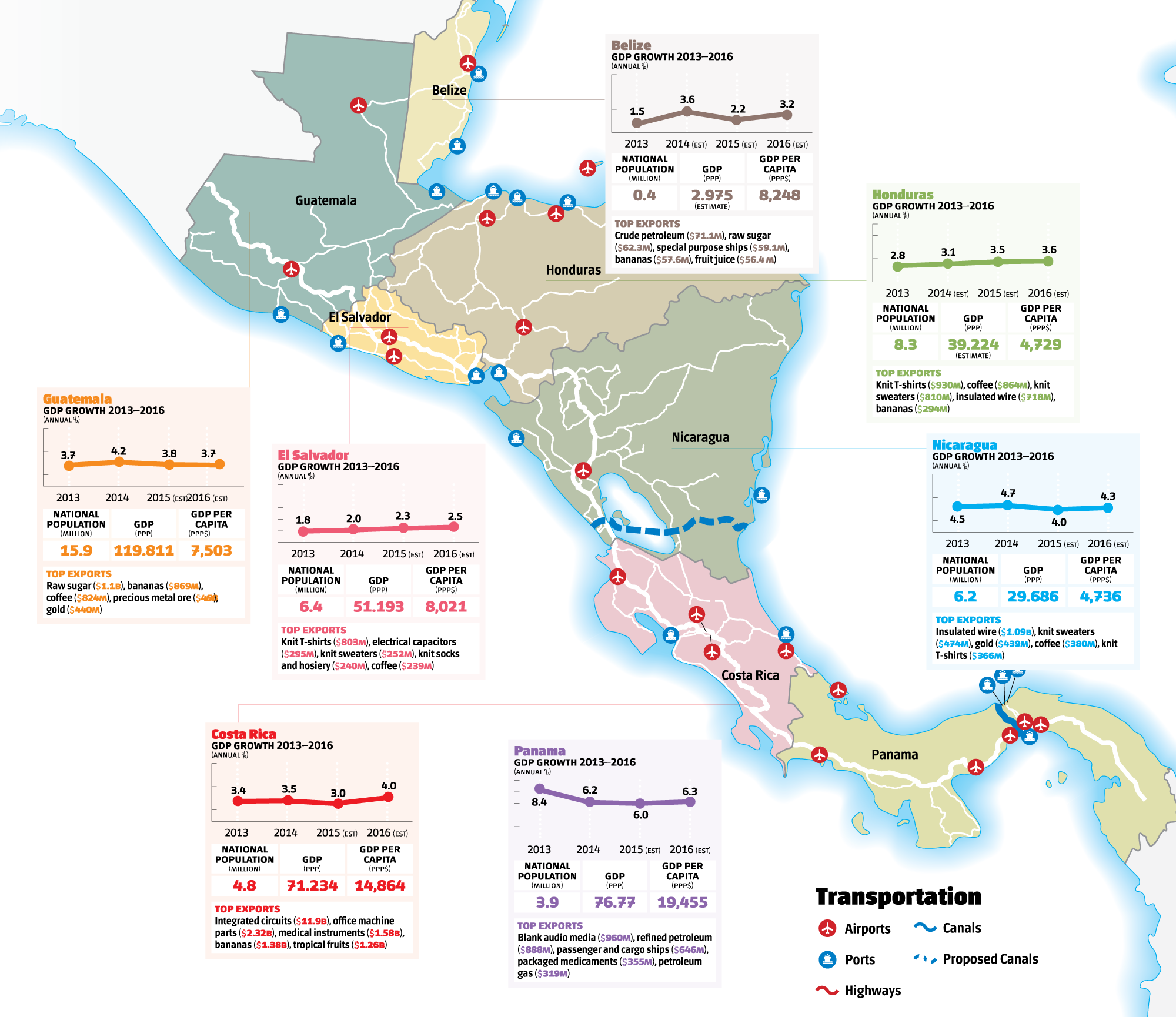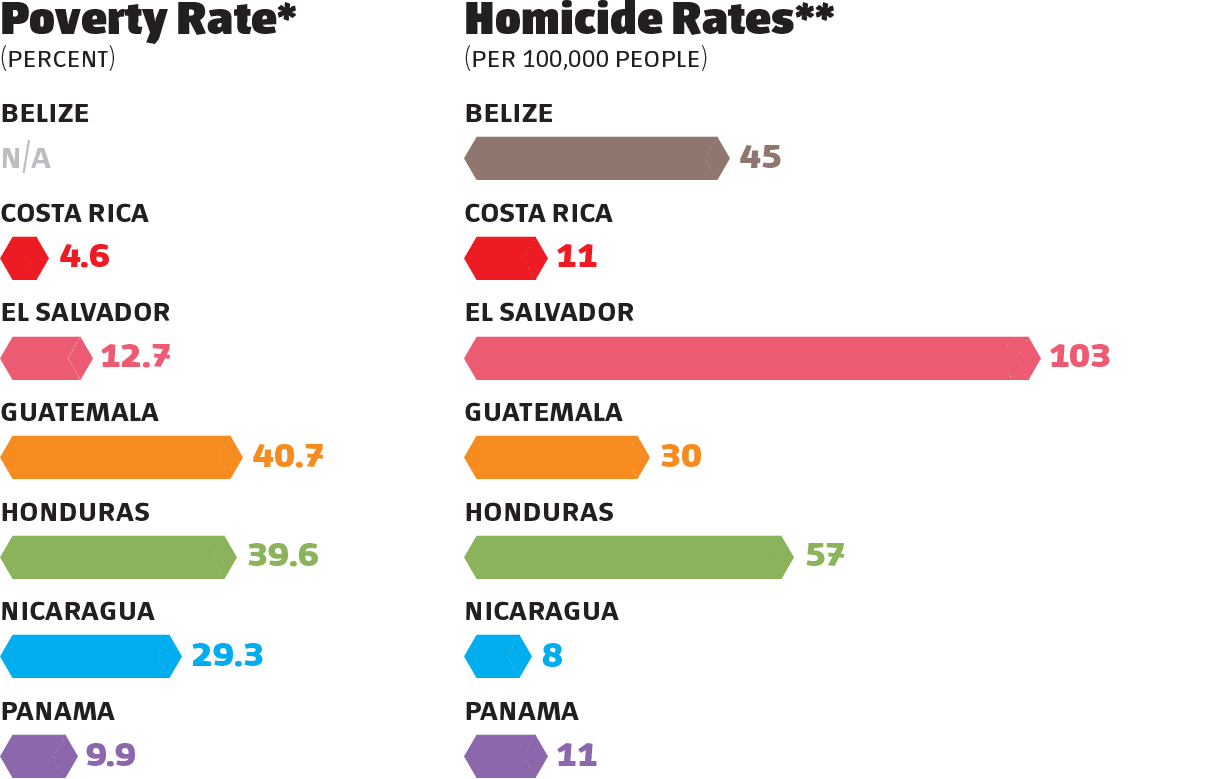
by Sarah Bons and Ivana Mellers
Does growth equal progress in Central America? In the following pages, AQ provides a snapshot of economic and social indicators from Guatemala to Panama, as well as an overview of the region’s infrastructure. While many countries have seen moderate to strong GDP growth in recent years, some have struggled to translate this into higher employment rates and lower poverty levels. Many countries remain highly dependent on remittances (money sent by citizens living abroad) and have struggled to build value-added products in manufacturing and other sectors. Furthermore, high levels of violence in northern Central American countries have stalled social progress and led to a major exodus of migrants in recent years.

SOURCES: CIA World Factbook; International Civil Aviation Organization; IMF; Observatory of Economic Complexity, mit; Google Maps; HKND Group
NOTES: GDP growth is in constant prices. Annual percentages of constant price GDP are year-on-year changes. GDP (PPP) is in billions in current international dollars.
YEARS OF DATA: Population (2014); GDP in PPP (2014); GDP per capita (2014); Exports (2013)
SOURCES: World Bank; IMF; UN Population Division; UNESCO; Insight Crime
NOTES: *Poverty Rate based on latest country-specific household surveys from SEDLAC. Surveys mainly from 2013/2014, but Nicaragua is from 2009. Poverty Rate is defined as the share of the population earning less than US$2.50 per day. **Homicide Rates from Insight Crime (2015) for all countries except Belize, which is from the World Bank (2012).
YEARS OF DATA: FDI (2014); Life expectancy (2013); Maternal mortality (2015); Remittances (2014); Migrant population (2015); Unemployment rate (2014); Cellular (2014); Labor force (2012 or latest available); Literacy (2015)


